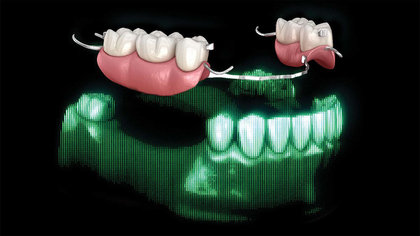2201 Dupont Dr., Irvine, CA 92612
© 2025 Glidewell. All rights reserved.
800-854-7256 USA
Learn the differences between guided vs. freehand surgical approaches for All-on-X implant restorations.
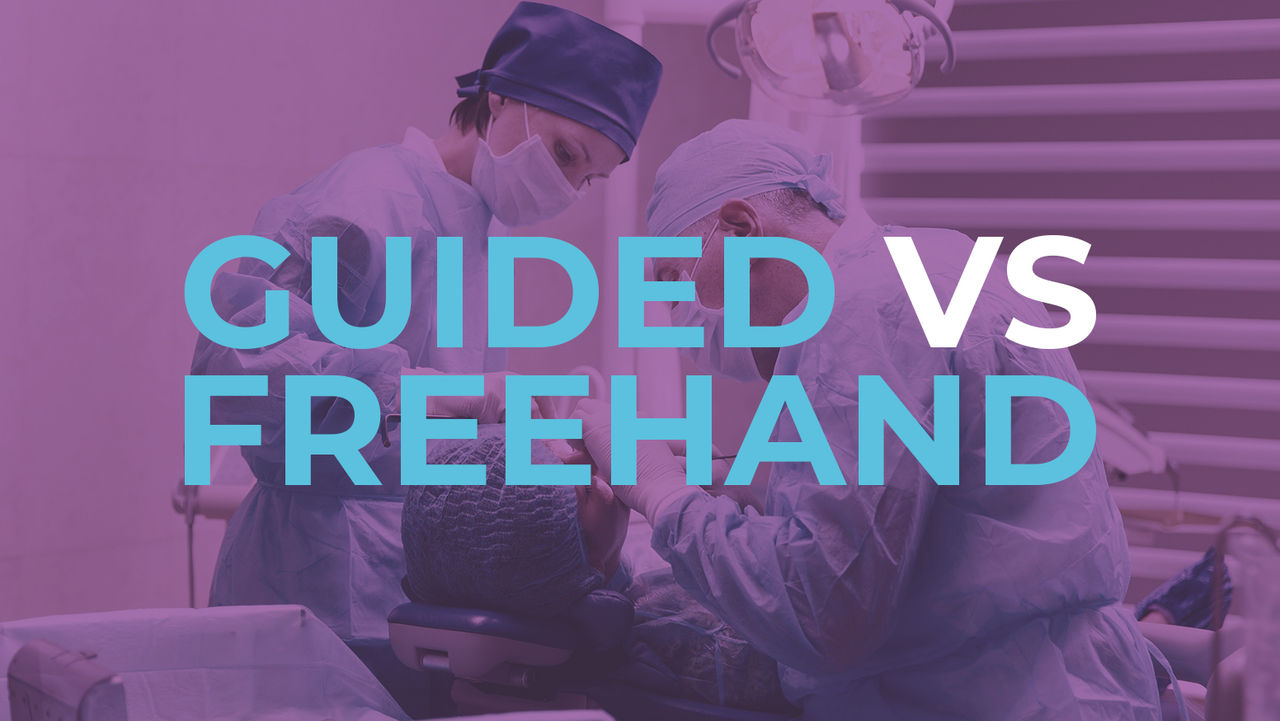
All-on-X implant surgery requires precise planning and execution. Whether you’re placing implants freehand or using a surgical guide, the approach you take has a direct impact on esthetics, function and patient satisfaction.
As full-arch treatments become more common, it’s important to understand the pros and cons of guided vs. freehand surgery for All-on-X cases to make the best decision for success. And if you do elect the guided surgical route, it’s essential to know the right surgical guide system to achieve consistent results.
This article compares and contrasts these different surgical approaches and provides key insights that will help you choose the right approach for long-term success in full-arch implant restorations.
What You’ll Learn in this Article
What Is Freehand Implant Surgery?
What is Guided Implant Surgery?
How to Determine the Best Method for All-on-X Surgery
What to Look for in a Stackable Surgical Guide System
GlidePRO™: A Stackable System Designed for All-on-X Guided Surgery
Thinking About Transitioning from Freehand to Guided for All-on-X?
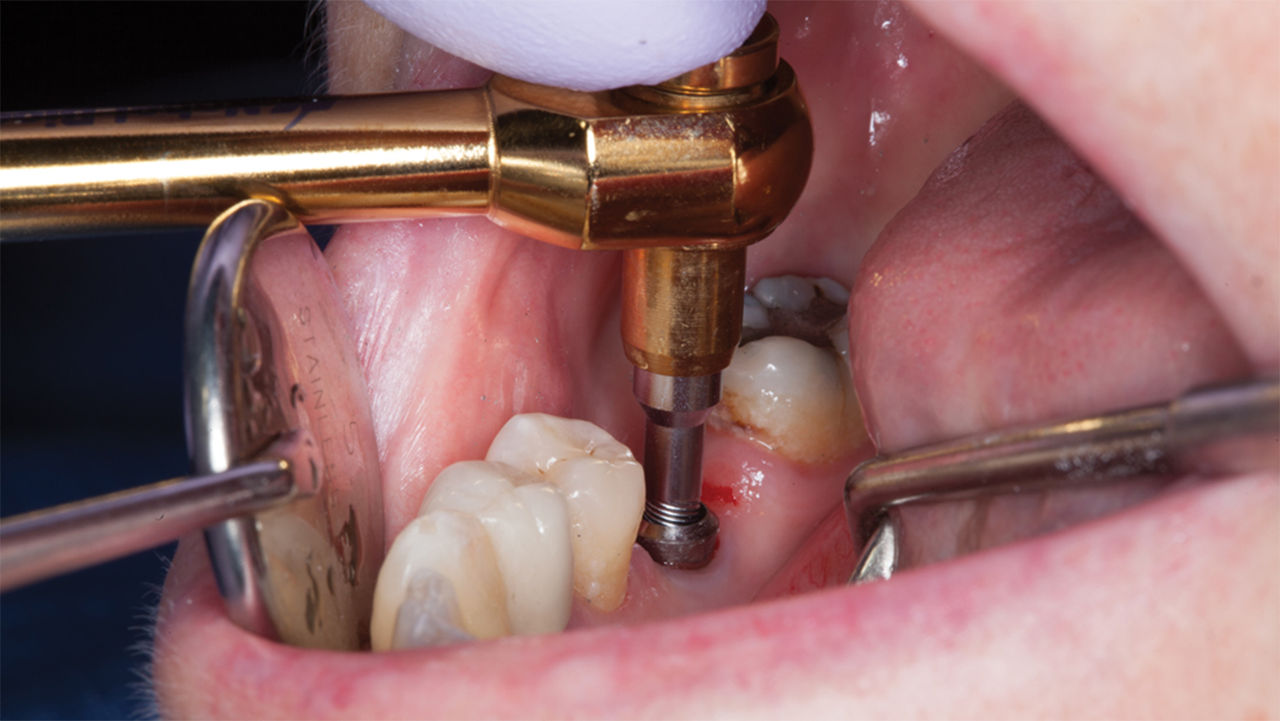
Freehand, or skill-based surgery, is a workflow based on analog elements combined with radiography and CBCT to perform implant placement. It’s the more traditional method and can be used in single-unit, multi-unit and full-arch cases.
Although it uses an analog approach in an age of technologically assisted options, there are still situations where it might be favorable to use a guided approach. Let’s explore the pros and cons of this workflow.
Freehand implant placement can work very well in some cases. Here are some of the pros:
Once experienced, dentists can get all the benefits of this skill-based approach — especially when patients present with no major anatomical abnormalities that can complicate the procedure.
There are times when freehand implant placement can run into challenges. Here are the cons:
Despite clinical skill and experience, freehand may not provide the consistency needed for All-on-X outcomes or immediate load implant cases.
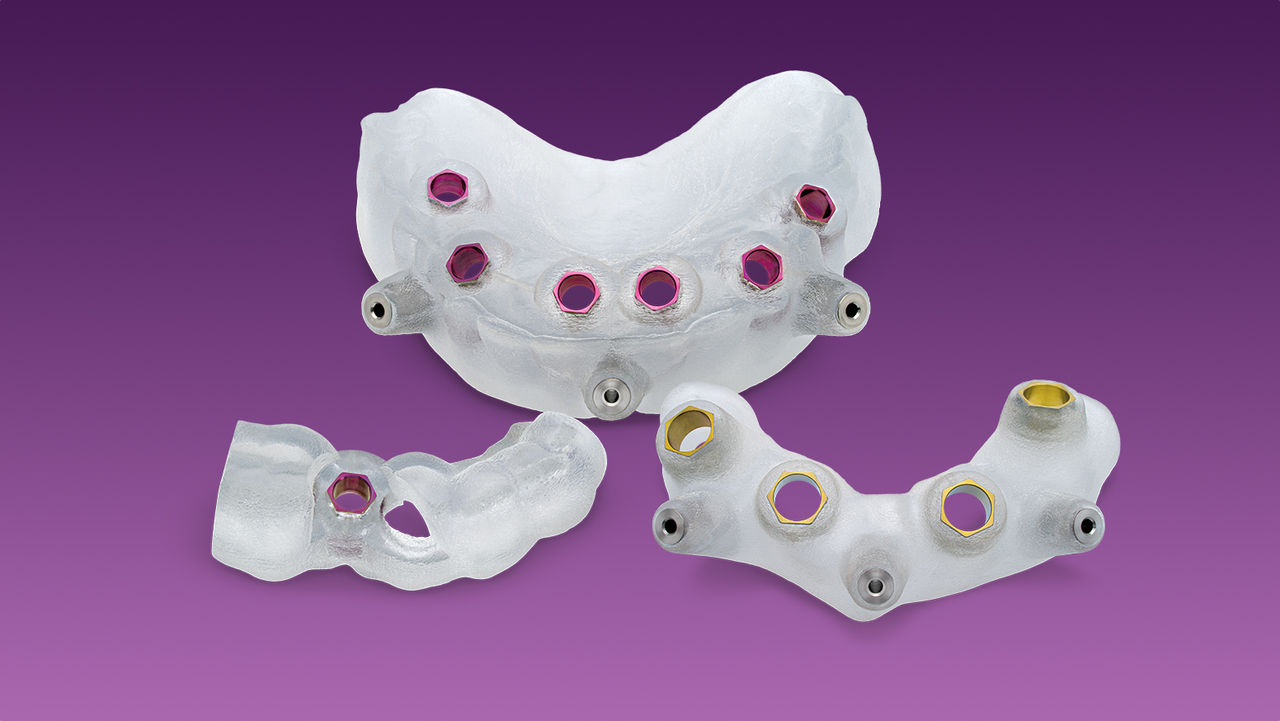
Guided surgery for placing implants is the combination of 3D imaging, CAD/CAM software and a lab-fabricated surgical guide working together to make a treatment plan and surgical procedure that is easy and predictable. Surgical guides direct dentists to drill at exact positions and depths no matter the complexity of the restorative environment.
Let’s explore the pros and cons of this increasingly popular workflow.
Guided surgery, whether for single-unit or All-on-X cases, is a predictable method seeking to improve accuracy in implant procedures. Pros include:
In full-arch cases, stackable surgical guides can allow for step-by-step execution, improving precision while reducing surgical and restorative challenges.
If planning is not done properly, it can present guided surgery with some issues. Here are some potential pitfalls:
It’s also crucial to note that surgical guides will not completely correct bad surgical technique, so it is important to be comfortable with implant placement.
When weighing the various pros and cons of guided vs. freehand surgery in the context of All-on-X, it’s crucial to know the risks of restoring a fully edentulous arch. Here are some of the factors that must be considered when treatment planning:
Because of the increase in potential complications in these cases, it’s best to mitigate the risks as much as possible. Determining implant locations for All-on-X shouldn’t require any second guessing, which is why it’s advantageous to use a lab service like Glidewell Digital Treatment Planning and guided surgery for a prosthetically driven restoration from start to finish.
And for even more precaution you have the option to choose stackable surgical guides, modular systems that guide dentists through the entire procedure from implant placement to provisionalization in a single visit.
Not all guides are designed the same, and that also goes for stackable guides for full-arch workflows. There are essential features to consider when searching for the perfect guide for success.
Lastly, it’s essential to work with a dental lab you can trust. Glidewell and our digital treatment planning specialists are most equipped to optimize full-arch implant workflows, thanks to technological capabilities and experience from more than 4 million cases restored.
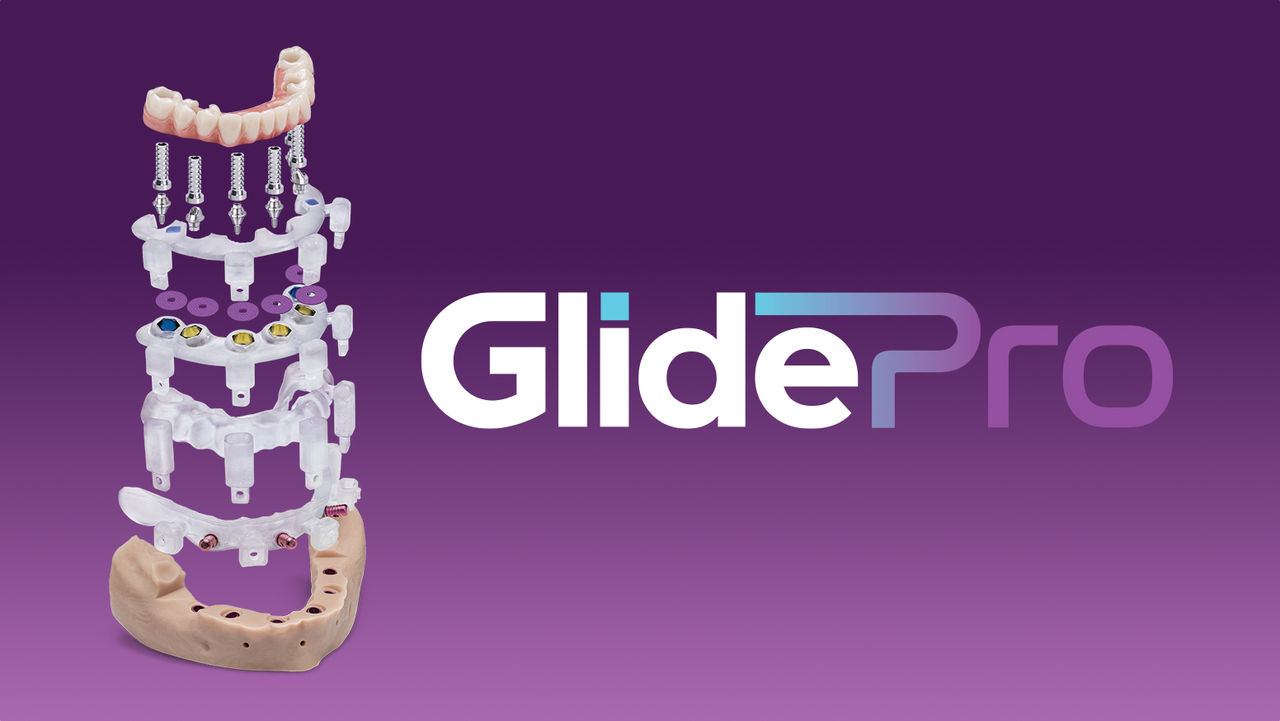
GlidePRO™ from Glidewell is a prosthetic-driven, stackable guide system built specifically for full-arch guided implant surgery. It is designed to help clinicians improve efficiency, reduce surgical complexity and enable consistent same-day teeth delivery.
Built with both clinicians and patients in mind, GlidePRO has many standout features:
By integrating the planning, design and surgical guidance into one streamlined system, GlidePRO reduces the risk of complications and supports faster, more predictable outcomes.
Stackable guides at Glidewell are available in three different tiers to suit the needs of any patient. Each tier includes a digital treatment plan, 3D-printed model, mounting guide, bone reduction guide, osteotomy guide and a 30-minute online review session with the digital treatment planning team.
When it comes to guided vs. freehand for implant surgery, there are cases to be made for both options. Having a foundation of skill-based implant placement elevates your abilities in all areas of the implant practice, so it’s essential not to disregard it.
That said, if you’re placing full-arch implant cases and want improve implant positioning and prosthetic fit, minimize intraoperative guesswork, reduce surgical and restorative time, or enhance the patient experience with same-day teeth, then transitioning to a guided workflow with a system like GlidePRO can provide the consistency and support you need.
Try GlidePRO today and transform the way you restore All-on-X cases in your practice.
Related Dental Articles
Send blog-related questions and suggestions to hello@glidewell.com.
